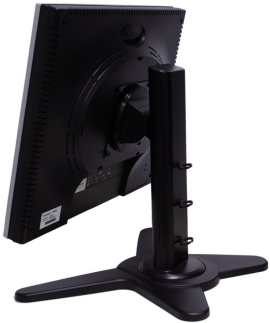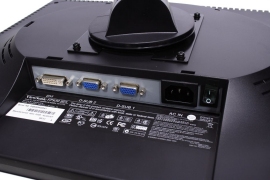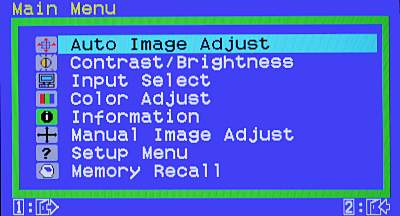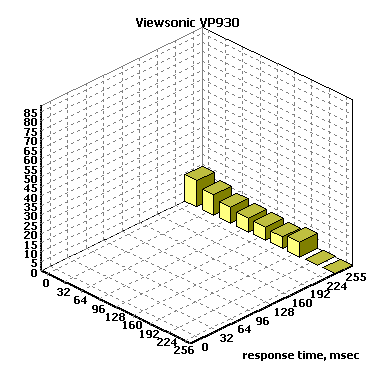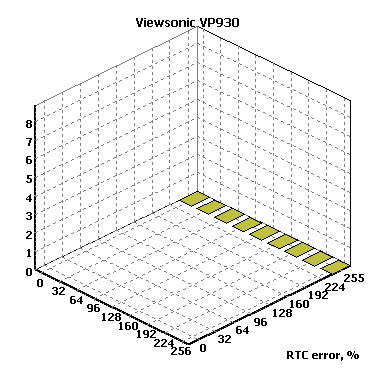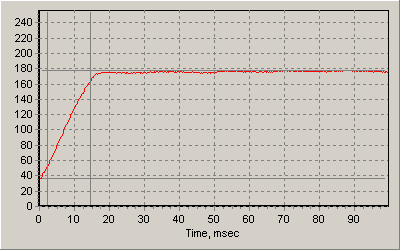LCD MONITOR REVIEW VIEWSONIC VP930 19 INCH
![]()
|
|
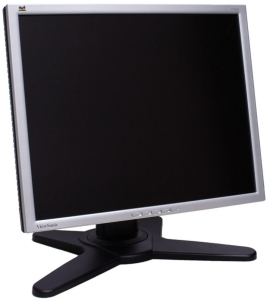 |
||||||||||||
| Posted:2006-07-08 By lcd monitor Number of View:23200 |
|||||||||||||
By :lcd monitor Posted:2006-07-08
ViewSonic VP930This lcd monitor belongs to another product category than the model discussed in the previous section. ViewSonic positions its VP series as professional lcd monitors for a fastidious user (but I wonder if they don’t count in processing complex graphics the VG series is meant for among professional tasks?)
The VP930 doesn’t look too impressive. It has a simple black-and-silver case with a large wide-stretching base. It lacks any decorations.
Still, we’ve got some high functionality here. You can adjust the height and tilt of the screen as well as to turn it into the portrait mode. And even though the many-legged stand doesn’t make the lcd monitor look any more beautiful, it is a solid support indeed.
The lcd monitor has three inputs, two ordinary analog D-Sub and one universal DVI-I. The point of this solution escapes me because almost all modern graphics cards have a DVI-I output and even barebones and mainboards with an integrated graphics core have begun transitioning to DVI, so the owner of this lcd monitor is unlikely to have two computers with D-Sub outputs only. On the other hand, the extra connector doesn’t make things worse.
The lcd monitor’s controls are placed in a row at the bottom of the lcd monitor’s case and are designed in the traditional ViewSonic style. And in a rather user-unfriendly style, I should say. There’s a minimum of labels – just one character per button. Even though you quickly get used to regard the “2” button as switching between the inputs and the “1” button as entering the menu, it would be much easier to have them labeled as Input and Menu, respectively.
The menu is ViewSonic’s standard one. It is not very convenient, but remembers the last changed position (this is a traditional item in my pros and cons list). A slow reaction to your pressing the buttons is the main drawback of the onscreen menu. By default, the lcd monitor has 100% brightness and 70% contrast. To achieve 100-nit brightness of white I selected 55% brightness and 60% contrast. Color gradients are reproduced by this lcd monitor not perfectly, but acceptably well, and their quality isn’t any worse at reduced values of the contrast setting (which is a common problem with many other lcd monitors).
The gamma curves are acceptable. The lcd monitor reproduces all the tones you expect it to, but not very accurately. The averaged gamma for the blue component is normal, but this curve deflects from the theoretical one rather much through the diagram; the gamma for green is a little too low.
The color temperature is set up well enough, so there is a small difference between the temperatures of white and gray, especially in the most frequently used modes with temperatures of 6500-7500K and whereabouts.
I was left highly satisfied with how response time compensation is implemented in the VP930. Unfortunately, the manufacturer couldn’t get rid of the sudden response time growth on darkest tones which is characteristic of MVA and PVA matrixes (the VP930 employs an MVA matrix made by AU Optronics). But unlike with RTC-less MVA matrixes, the response time quickly goes down to 10-11 milliseconds towards lighter tones, so the lcd monitor proves to be quite suitable for playing games. The averaged response time on all the transitions is 11.5 milliseconds, a little lower than that of the above-described EIZO L778.
The lcd monitor has no RTC artifacts. There’s something like them only on a few transitions, but the maximum error amounts to only 8.9%. The average error is a mere 0.5%. To tell you the truth, the VP930 with its matrix can be used as an example of an accurate implementation of RTC technology. For example, here is an oscillogram of one of its transitions:
That’s just a picture for a schoolbook: the pixel brightness is growing linearly exactly up to the moment it reaches the necessary level. There is no bend at the end that occurs when the overdrive impulse is turned off sooner than necessary, and the brightness doesn’t go above the necessary level which occurs when the impulse is turned off too late.
Alas, this lcd monitor cannot sport record-breaking contrast/brightness characteristics. Its 190 nits of max brightness is more than enough for work and play under not-very-bright lighting. You’ll only have a problem if you try to watch a movie on this lcd monitor on a sunny day – this is when you need higher brightness and this is why LCD TV-sets typically have a maximum brightness within a range of 350-450 nits, which is considerably higher than PC lcd monitors can usually offer). So, my overall impression about the ViewSonic VP930 is positive. It’s not something extraordinary, yet can make a good lcd monitor for home and office use. It has a functional stand, accurate setup, good response time without artifacts, and an MVA matrix with large viewing angles. The only drawbacks are its rather unassuming exterior design and a not-very-handy onscreen menu, but I think these are not going to stop you if you are looking for a lcd monitor to work on.
we would be happy to answer for your question . if you have suggestion or comment
regarding this review our support would be glad to help just join our forum and ask u will get the best answer
to discuss check our forum section :-) RATE THIS REVIEW | |||||||||||||
![]()

7600gt review
7600gt is the middle card range.
We already benchmarked this video card and found that ...

 geforce 8800gtx and 8800gts
geforce 8800gtx and 8800gts  Xtreview software download Section
Xtreview software download Section  AMD TURION 64 X2 REVIEW
AMD TURION 64 X2 REVIEW  INTEL PENTIUM D 920 , INTEL PENTIUM D 930
INTEL PENTIUM D 920 , INTEL PENTIUM D 930  6800XT REVIEW
6800XT REVIEW  computer hardware REVIEW
computer hardware REVIEW  INTEL CONROE CORE DUO 2 REVIEW VS AMD AM2
INTEL CONROE CORE DUO 2 REVIEW VS AMD AM2  INTEL PENTIUM D 805 INTEL D805
INTEL PENTIUM D 805 INTEL D805  Free desktop wallpaper
Free desktop wallpaper  online fighting game
online fighting game  Xtreview price comparison center
Xtreview price comparison center 

- The new version of GPU-Z finally kills the belief in the miracle of Vega transformation
- The motherboard manufacturer confirms the characteristics of the processors Coffee Lake
- We are looking for copper coolers on NVIDIA Volta computing accelerators
- Unofficially about Intels plans to release 300-series chipset
- The Japanese representation of AMD offered monetary compensation to the first buyers of Ryzen Threadripper
- This year will not be released more than 45 million motherboards
- TSMC denies the presentation of charges from the antimonopoly authorities
- Radeon RX Vega 64 at frequencies 1802-1000 MHz updated the record GPUPI 1B
- AMD itself would like to believe that mobile processors Ryzen have already been released
- AMD Vega 20 will find application in accelerating computations
- Pre-orders for new iPhone start next week
- Radeon RX Vega 57, 58 and 59: the wonders of transformation
- ASML starts commercial delivery of EUV-scanners
- The older Skylake processors with a free multiplier are removed from production
- Meizu will release Android-smartphone based on Helio P40
- AMD Bristol Ridge processors are also available in American retail
- The fate of Toshiba Memory can be solved to the next environment
- duo GeForce GTX 1080 Ti in GPUPI 1B at frequencies of 2480-10320 MHz
- New Kentsfield overclocking record up to 5204 MHz
- Lenovo released Android-smartphone K8



computer news computer parts review Old Forum Downloads New Forum Login Join Articles terms Hardware blog Sitemap Get Freebies


